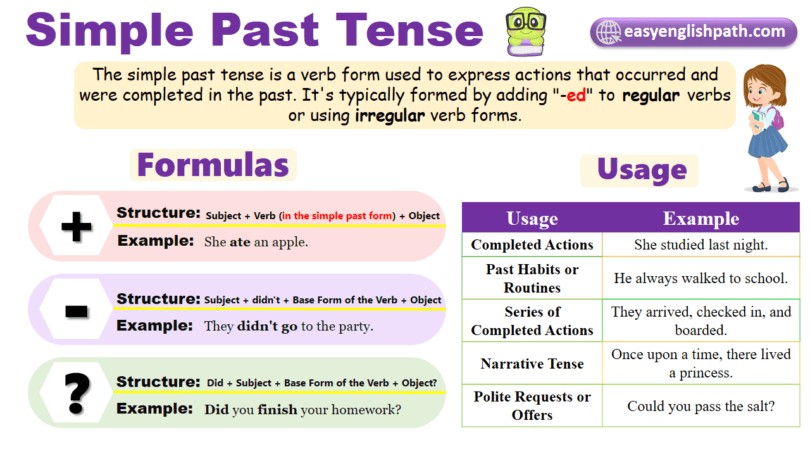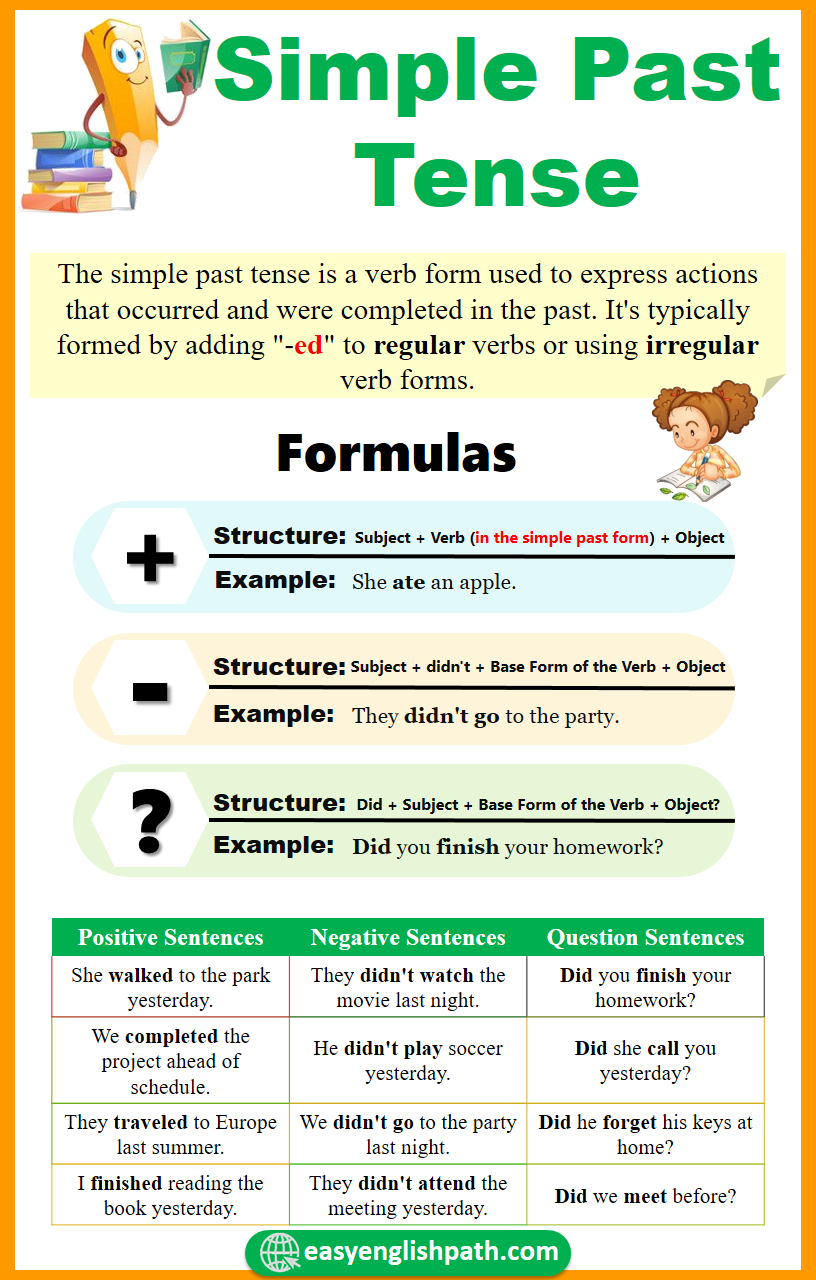The Simple Past Tense is used to talk about things that happened in the past and are finished. You can use it to tell stories about what already happened. Regular verbs usually end with “-ed” in this tense. But some verbs have different past forms. Simple Past helps you talk about yesterday or long-ago events. It’s important to learn it because it makes your past stories easy to understand for others.
Simple Past Tense Definition:
Simple Past Tense is used when we talk about something that already happened in the past. This tense is used how we talk about things that already happened. Like, I walked or She played. If a verb is regular, you add –ED at the end, like talked or jumped. But some verbs are different, like ‘GO’ becomes Went.
- They watched a movie last night.
- He cooked dinner for his family yesterday.
- We visited Paris two years ago.
Forming the Simple Past Tense
Forming means changing the verb to show it happened in the past. For regular verbs, you usually add “-ed” to the end. Irregular verbs have special past forms you need to remember. This helps us talk about things that already happened. It’s important because it makes our stories clear when we talk about what we did before.
How to form Negatives?
| Subject + didn’t + base form of the verb |
To form negatives, you generally use the helping verb ‘Did’ along with ‘NOT’ which is contracted to Didn’t. This pattern applies to all subjects (I, you, he, she, it, we, they). Then, you follow it with the base form of the main verb. This structure creates a clear contrast between actions that were done and those that were not done in the past. It’s a straightforward way to express negation in past situations.
- He didn’t go to the party.
- They didn’t finish their homework on time.
- She didn’t like the movie.
How to form Positives?
| Subject + Past tense of the verb (+ Object) |
To form positive sentences, you need to use the correct past tense form of the verb. For regular verbs, this typically involves adding -ed to the base form of the verb. Like walk becomes walked. However, for irregular verbs, there isn’t a consistent rule, so you need to learn the past tense form individually. Here’s the general structure:
- We watched a movie together last Friday.
- They visited their grandparents yesterday.
- She played basketball last weekend.
How to form Questions?
| Did + Subject + Base form of the verb (+ Object) + ? |
To form questions, you can use the auxiliary verb did that followed by the subject and the base form of the main verb. Simply Unlike other tenses where the main verb is conjugated, Now the important thing in Simple Past Tense, the main verb remains in its base form regardless of the subject. After the subject and verb, you can include the object but always keep in mind if necessary. Finally, you end the sentence with a question mark to indicate it’s a question. Here’s the general structure:
- Did she go to the party last night?
- Did you finish your homework yesterday?
- Did they visit the museum on Saturday?
You May Also Like This






